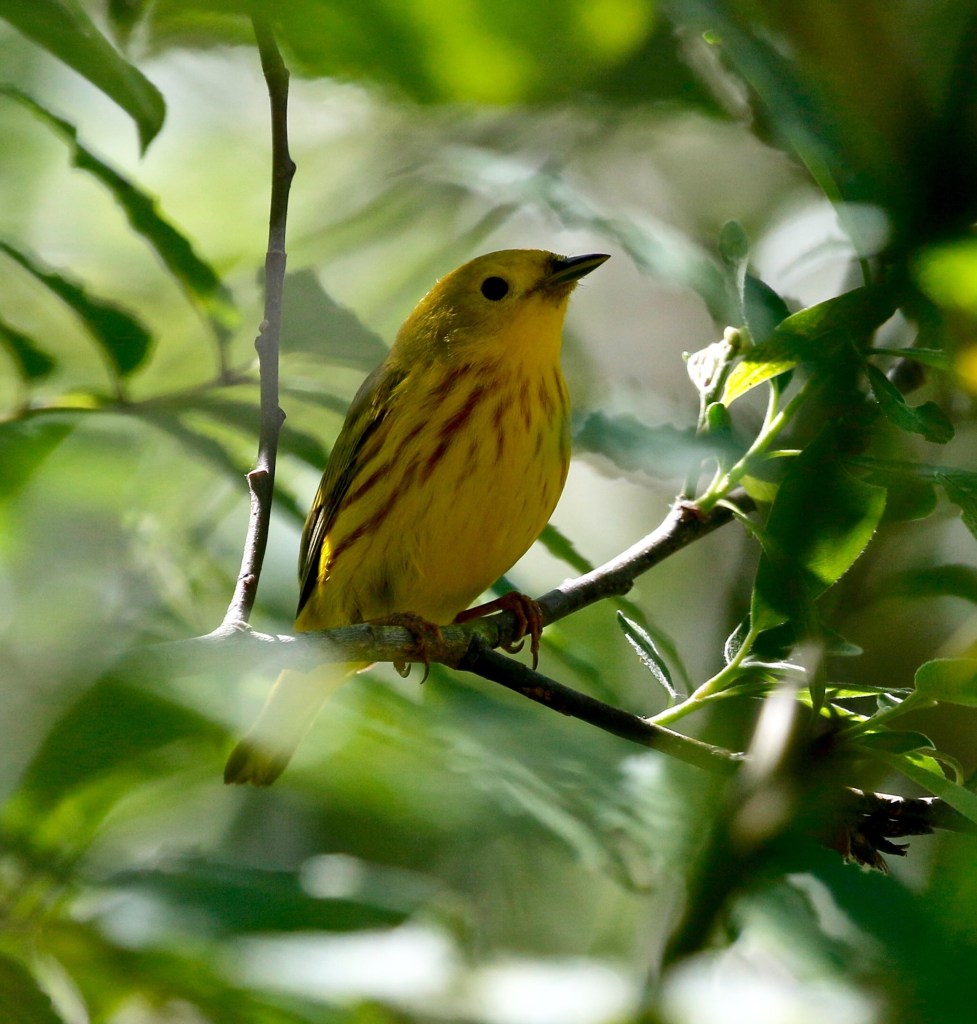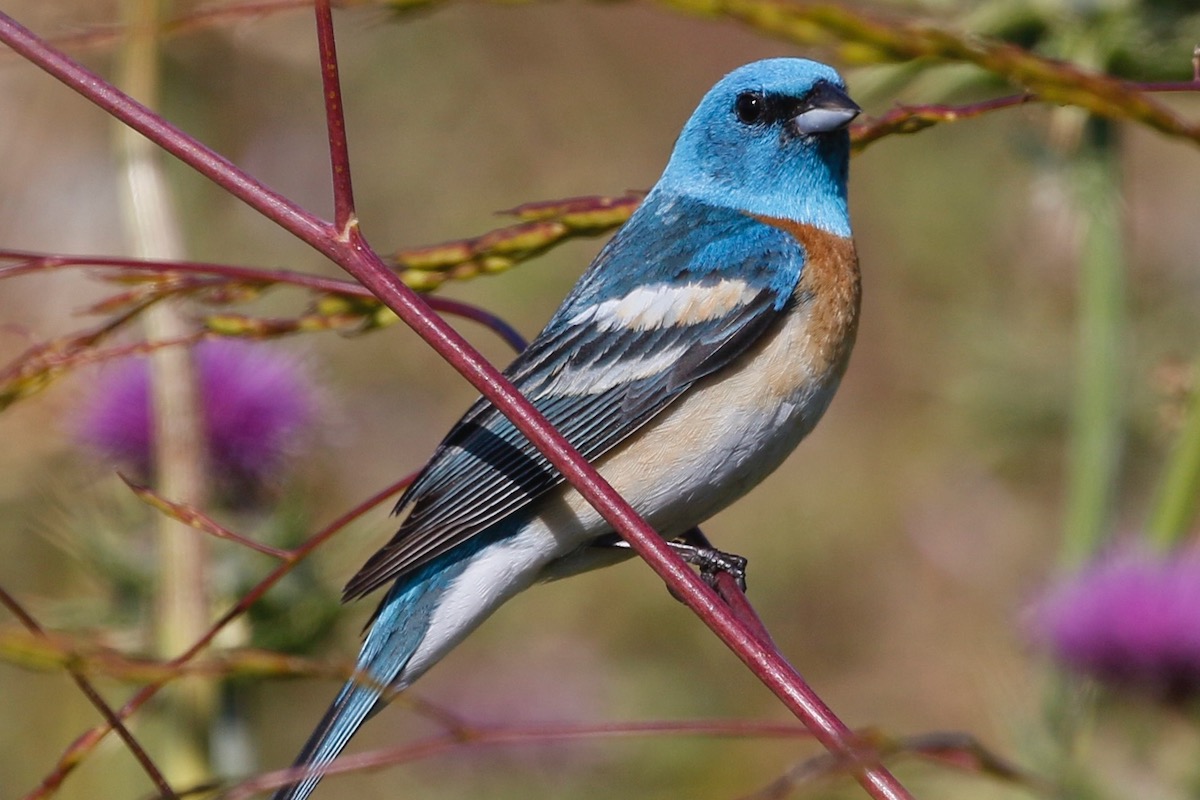For as long as I’ve been birding, it has been common wisdom that there are diurnal (daytime) and nocturnal migrants. Examples of diurnal migrants include hummingbirds and swallows — it’s hard to imagine birds in these families journeying during the night. The nocturnal migrants include the songbirds, such as warblers, thrushes, tanagers, and vireos. I’d assumed there were hard and fast rules about which birds moved when, but recent observations by birders are turning these notions on their heads.
Richard Crossley, a British birder and the author of innovative bird field guides for both the United States and Great Britain, has devoted the last few years to studying visible migration, particularly spring migration. He moved to the Tejon Pass area of Los Angeles County for the sole purpose of documenting hitherto unknown migration patterns, where he discovered that songbirds are indeed making the expected nocturnal movements across the desert at night. But at dawn, and for the few hours afterward, these birds drop down and begin to feed, particularly in the chaparral. Crossley’s big discovery is that birds don’t necessarily stop and feed during the morning in order to refuel — most keep moving, concurrently migrating and feeding. Often when they run out of vegetation in which to forage, they take off again, some gaining great height to continue their migration during daylight hours. His thinking is that birds will take advantage of favorable conditions to get to their breeding grounds in the shortest time possible.

Closer to home, birders have noticed a similar phenomenon, but here the visibility of diurnal migration is even more dependent upon favorable weather conditions, stiff northern winds being the main criteria. Because our mountains trend in an east–west direction, if winds are blowing from the north, birds following the coast at night will drop lower in altitude, presumably where the winds are weaker. At dawn, as they reach the Santa Ynez Range, they drop down and begin to feed. Observations here mirror Crossley’s theory that these low-flying birds will keep moving, flying up sheltered canyons, stopping to feed in trees as they climb, and then skipping over the mountain passes.
In the greater Santa Barbara area, there are several good places to view spring migration. Brad Hacker has observed large numbers of birds moving up both San Marcos Pass and Romero Canyon. Another good place is at the base of Refugio Canyon, particularly where the trees begin to thin out above Circle Bar B Ranch. In recent years, Nick Lethaby and others have made regular spring visits to the canyon at dawn.
A few weeks ago, Lethaby called me to say weather conditions looked good at Refugio the following morning, and would I like to join him? He looks at a website, Windy.com, that forecasts wind direction and speed for any place in our county, and the site said the winds would be coming from the north at dawn and would be fairly strong, thus forcing birds down.
I picked up Lethaby as day was breaking, and we parked in a small pullout as the canyon began to steeply rise. The wind was cold, and I wished I’d put on an extra layer. We were soon hearing, then seeing, birds as they moved up the canyon. Lethaby showed me a couple of spots with isolated oaks in which birds would invariably visit to feed in before heading up the pass. It was a real eye-opener for me, never having witnessed daytime migration in my half-century of birding. We had to leave many of the birds unidentified as they shot over our heads in their hurry to keep moving north. But many would land close by for a few seconds, allowing for close looks.
One of the most spectacular birds was the male lazuli bunting in his brilliant blue-and-orange glory. We saw many. Of the warblers, we saw more than 40 golden-yellow Wilson’s warblers, along with multiple yellow and Townsend’s warblers. Flycatchers were also in evidence, with both olive-sided and Pacific-slope logged. Forty warbling vireos moved upslope, some in clusters, some singly. Brilliant Bullock’s orioles, western tanagers, and black-headed grosbeaks all passed by in good numbers.


(Left) This ash-throated flycatcher stopped briefly on its way up Refugio Canyon. (Right) Warbling vireos were one of the more common species migrating at Refugio. | Credit: Hugh Ranson
After three hours, the wind had dropped and the birds moving at tree level slowed to a trickle. Presumably birds that were still migrating north were taking advantage of the calmer conditions to fly high over the pass on their long journey. Lethaby told me that this was an average day at Refugio; on some days, he’s seen more than 600 birds on the move.
Every day is different as far as the numbers and prevalent species goes. Our understanding of bird migration is still in its infancy, but what is known has important implications. For Crossley, the goal of his work is to identify areas that are vital for migrating birds so that these areas can be protected.

 on Google
on Google 



You must be logged in to post a comment.